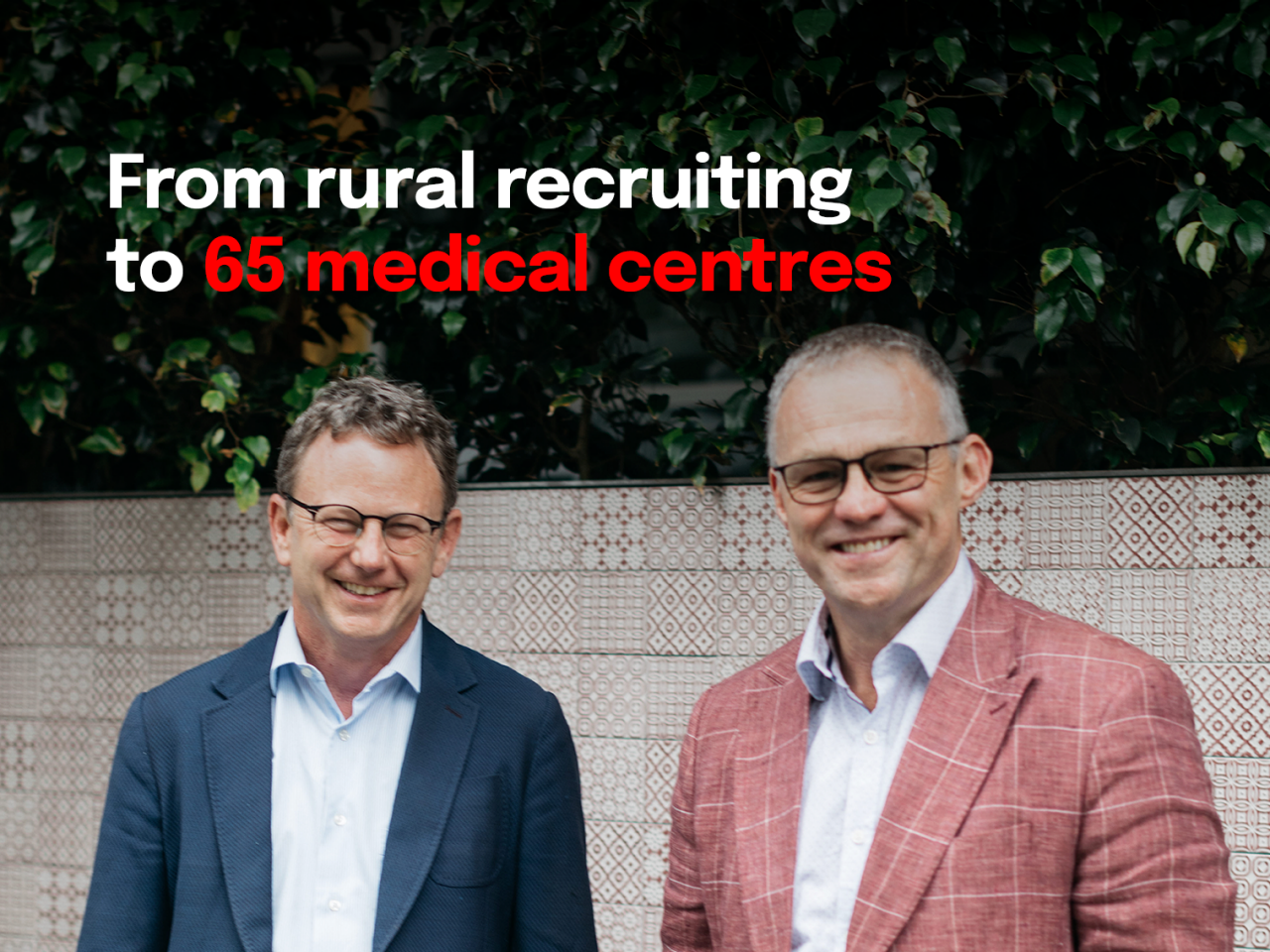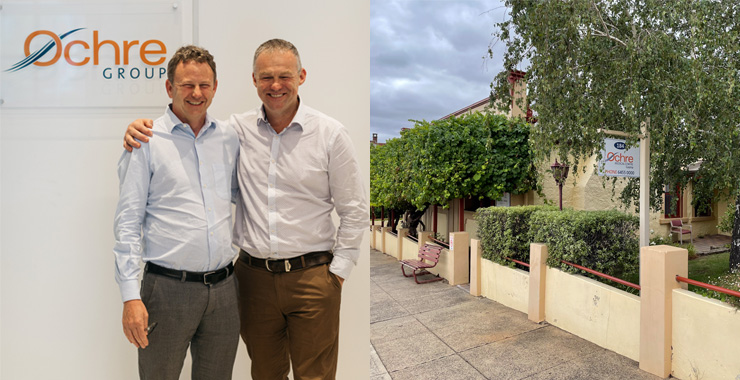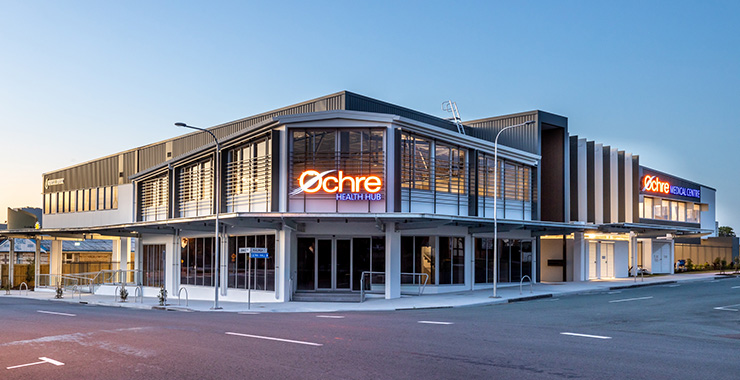25 March 2025
Case studies
January 17, 2023
From rural health recruitment to 65 medical centres
While practising in the NSW outback, doctors Hamish Meldrum and Ross Lamplugh had a passion to improve rural and remote healthcare. Today, the result is Ochre Health - a national network of 65 medical centres and two medical recruitment businesses. And they're not done yet.
By Health View

It was Christmas 2001 and Dr Ross Lamplugh was about to miss out on his holiday. He and Dr Hamish Meldrum were working as procedural GPs in the NSW outback town of Bourke and had planned a break at the same time. Despite giving six months’ notice of their plans, the promised locums to cover their practice kept falling through.
Lamplugh’s wife was having a baby and Meldrum was headed to New Zealand for a much-needed trip to see his own family. Without locum cover, one of them would have to change their plans or the community would have no medical care.
After a desperate appeal to friends and friends-of-friends, the doctors finally secured locum cover. What also resulted was the seed of a business opportunity – to establish a rural medical recruitment company.
“Attracting qualified practitioners to rural areas is notoriously difficult,” Lamplugh says. “We managed to do so in that scenario, and we realised there was a critical demand for locums as well as an opportunity to make them feel comfortable and welcome.
“Talking to those doctors later, we realised what a difference this made. We believed we could achieve better results if we made the locum experience more positive and that’s why we decided to start our own business, Australian Outback Locums.”
That company went on to become Ochre Health, which today is a leading provider of primary care health services to rural, regional and now urban communities around Australia.

Dr Hamish Meldrum and Dr Ross Lamplugh began their business as a way to make rural locum recruitment a more effective and rewarding experience.
A hospital in need of help
The expansion beyond recruitment kicked off in 2002 when the NSW Department of Health offered Meldrum and Lamplugh a contract to staff and maintain a 24/7 emergency department and a general practice in the town of Brewarrina, in the north west of the state. Known locally as Bre, the town had been without a permanent doctor for almost three years.
“We began advertising, and the stand-out candidates were a husband and wife living in New Zealand and interested in an outback adventure,” Lamplugh says. “They said they’d be happy to work in Bre for a year if we could meet certain conditions, including real basics like a guaranteed income.”
Meldrum and Lamplugh persuaded the Department of Health to guarantee a daily rate based on a full-time doctor’s salary, then did the rest themselves. “This included providing a house, setting it up so visiting doctors would feel comfortable right away, and even finding local childcare,” Lamplugh explains. “We agreed to run the general practice so the doctors could focus on caring for their patients – and we made it clear that we were always there to provide support. The New Zealanders ended up staying in Bre for five years.”

Ochre Group is now a national organisation spanning recruitment and 65 medical centres.
Making their healthcare model work
More hospital contracts followed – eight in Western NSW and eight in remote areas of Tasmania. Meldrum and Lamplugh also opened their first independent medical centre when another doctor, struggling under the weight of the administrative burden, asked if they would run her suburban practice.
In 2008, opens in new window, the then Labor Commonwealth Government announced a ‘GP Super Clinics’ Program that would provide grants to build multi-disciplinary medical centres in areas of need. When $5 million was allocated to Grafton in NSW, local doctors supported Lamplugh and Meldrum’s application.
“The application was successful and it confirmed we could run a medical centre in an urban area along the lines of our rural practices,” Lamplugh says. “This included skilled doctors working at the ‘top of their licence’ and providing patients with quality care supported by excellent nurses and admin teams as well as a range of allied health services.
After winning grants for more standalone medical centres, Meldrum and Lamplugh realised there was demand for their model in urban areas. The doctors found that the right medical centres, bought for the right price and well-integrated into the ‘Ochre family’, could be profitable, provide a great working environment and fulfil their ambition to keep growing.
Today, Ochre Health is a network of 65 medical centres spanning five states and territories. The group also includes medical recruitment and workforce solutions businesses Ochre Recruitment and Medical Directions. Despite the growth, Lamplugh and Meldrum say they have never lost sight of their three original guiding principles.
“We will only manage a clinic we’d be happy to work in ourselves, we will only engage doctors we’d be happy to take our kids to, and we try to exceed expectations in everything we do,” Lamplugh says.

The Ochre business remains grounded in regional and rural teams.
Funding for growth
While NAB has been working with Ochre since the early days of the recruitment business, during their first 10 years in business, Meldrum and Lamplugh built up their business by reinvesting most of their profits into Ochre Health.
“In the early days our major need for capital was for doctor accommodation and for building business systems,” Lamplugh explains. “As we began acquiring more practices, our reliance on a debt facility increased, and this has always been provided by NAB. As the acquisitions have ramped up over the last few years, this debt facility has been significantly increased to support the growth.”
“Ochre has always been a great client to work with,” says Leon Dain, Director, NAB Health. “They understand the importance of having sound infrastructure, systems and governance in place, and they have incredibly strong values. Our team has grown along with their requirements so, by the time we were organising major funding for them, I was working closely with two other senior bankers and a group of specialists.”
A bright future ahead
Meldrum and Lamplugh are confident their practice model produces good patient outcomes because they run a unique program that tracks these, and they are keen to extend their influence.
“This is a significant aspect of our focus on continuing national growth,” Lamplugh says. “We want to have the credentials and track-record for a seat at the table when government is discussing primary care policy and how this can be improved in the future.”
Case studies Health


